#mediterranean hurricane
Text
Medicane

Questo termine nasce dalla contrazione dell’inglese Mediterranean hurricane e serve a definire un tipo di ciclone che si manifesta sul Mediterraneo, come quello che ha devastato la Libia nei giorni scorsi, causando la rottura di due dighe che hanno liberato una quantità d’acqua mostruosa riversatasi sulla città di Derna, con migliaia di morti.
Il medicane è un fenomeno abbastanza raro nel Mediterraneo, ma oggi rischia di diventare frequente, perché in tutto il bacino c’è stato un cambiamento nella circolazione dell’aria. In passato era legata all’anticiclone delle Azzorre, con la salita di anticicloni africani. Quando l’aria molto calda di questi anticicloni si inoltra verso il centro o nord Europa, l’aria che sale viene sostituita da aria fredda che scende ai suoi lati , a Ovest e a Est. Su questi lati si forma un ciclone, con venti che ruotano in senso antiorario e precipitazioni molto forti. Questi eventi sono favoriti dal mare Mediterraneo estremamente caldo: si crea vapore acqueo, si formano le nuvole, l’atmosfera si riscalda e quando non riesce a trattenere tutta quella energia la scarica sui territori circostanti. Il cambiamento climatico è uno dei fattori che provoca questi eventi, l’altro è la vulnerabilità e la fragilità dei territori.
Photos by The Associated Press
#sostenibilità#cambiamenti climatici#climate change#terra#consumo del territorio#acqua#derna#ciclone#medicane#libia#mediterranean hurricane#mediterraneo
1 note
·
View note
Text
This Week in Prophecy: Israel Moves In; Mr. Speaker & The Squad; Hurricane Otis & Acapulco
This Week in Prophecy: Israel Moves In; Mr. Speaker & The Squad; Hurricane Otis & Acapulco
Luke 21:9 But when you hear of wars and commotions, do not be terrified; for these things must come to pass first, but the end will not come immediately.
⚠️ Confirmed: Real-time network data show that NetStream, one of the last remaining internet providers in #Gaza, has collapsed days after the operator notified subscribers that service would end due to a severe shortage of fuel supplies 📉…

View On WordPress
#Acapulco#Arab Israeli Conflict#Gaza Strip#golan heights#Hezbollah#Hurricane Otis#IDF#internet#Israel#Israel Defense Forces#Lebanon#Mediterranean Sea#Mexico#Mike Johnson#Navy#Palestine#Persian Gulf#President Joe Biden#Red Sea#Shifa Hospital#Speaker of the House#terrorists#The Squad#United States#US Congress#USS Eisenhower#USS Ford#War Powers Notification
0 notes
Note
What would be the main differences between a template forest and a tropical jungle for fantasy? I guess that things like iron armor pieces would never become a thing since historically they weren't popular in other hot climates, winters without snow might be less feared but summers with big floods might be more worrisome? I guess that cuisine and farming would also be massively different although I don't know exactly how.
Out of the top of my head:
Equatorial climates are notoriously stable, since it's always the same day lenght there are no seasons, especially if you live near the ocean which estabilizes the temperature. You will get dry and wet seasons (and sometimes even hurricane seasons) depending on particular geographic conditions
Tropical/subtropical climates often have harsher seasons the farther away from the ocean they are, but never snow (that's the difference actually; temperate climates can get snow, subtropical can get frost but not snow, tropical neither). So yes, in general in a tropical or subtropical the main difference between seasons is rain, and perhaps frost which does play a role in some plants like citrics. Rainforests, of course, get it all year, subtropical forests have dry and rainy seasons. You can see a mixture of both: in my home (Northern Argentina) we do get marked winters with ocassional frost, but the main fact is that they're dry compared to summer.
ANYWAYS. Cultural stuff! Yes, one of the main differences you will find is clothing. It's difficult to make generalizations, but overall, tropical cultures just wear less, if there is armor at all. Don't get mistaken and say that it's because they don't have metallurgy, though, it's just that metal armor is indeed heavy, hot, and not much use if the opponet isn't wearing anything either. At most, you would see padded cloth armor (cotton mostly) or hide/leather at most. If you look at soldiers from, for example, Mesoamerica or Southeast Asia, you will find little armor.
Similarily, while you can go wild with noble clothing and colors, and the preferred materials are indeed cotton or silk, you will find very simple clothes among the general population. To give you an idea, here's a sample of Aztec clothes (including armor!)

Note how simple and lightweight they are, even for rulers. They are colorful too (the artist, Daniel Parada, has more pictures like this for other cultures based on historical records) but although tropical enviroments might seem to have greater access to dyes, medieval european did also have dyes, often not as vibrant as carmine though.
Farming, of course, affects cuisine. I think that instead of thinking about a "pan-tropical" farming, we could analyze this by centers of origin of crops:
From Southeast Asia we got soy, several types of beans (or Fabaceae if you wanna get technical), all citrics, mango, banana, pear, cherry,, but this pales in comparison to rice, of course. Rice defines the tropical and subtropical diet of Asia, being what wheat is to the Mediterranean. Rice cultivation is particular in that is labor extensive, much more productive by area compared to other crops (so smaller plots) and requires extensive irrigation, resulting in complex managed enviroments.
From tropical America we got manioc, squashes (all sorts of curcubita actually), beans, peppers, pineapples, papaya, so much more, but it's especifically from Mesoamerica we got corn, and from the Andes we got potatoes. Potatoes are key in cold climates. Meanwhile, the corn-beans-squash trio, that is known in North America as "three sisters" and in Latin America as "milpa" is spread all over the continent. These three kinds of plants are very adaptable to tropical and subtropical conditions, and combined are very productive.
I will admit that my knowledge about tropical Africa is less than ideal. There are native species of rice that can be found in Western Africa, Ethiopia has traditionally grown barley and sorghum (and is the home of coffee), and millet, like corn for the Americas, seem to be widespread.
As for spices, tropical areas do seem to be blessed with spices, this is true. I recommend this guy to tell you about it. Hell, I recommend his channel in general.
What IS a common theme, regardless, is that jungles are NOT pristine enviroments or wild enviroments untouched by human activity. Jungles have been managed, in overt ways (like for example, rice cultivation) or more subtle ways (planting domesticated species inside the forest) for thousands of years. This is also done by controlled burns, conscious planting, or even accidental things, like, for example, peoples settling in a place and bringing domesticated plants to that place that then grow semi-wildly.
THIS IS SO FRUSTRATING TO TALK ABOUT BECAUSE EVEN IF I STUDY THIS EXACT THING, I HAVE NO REAL DEFINITION OF IT YOU CAN SEARCH. You can find about this phenomenon of "humans managing and changing forest enviroments" by lots of terms, like agroforestry, silviculture, and so many more. The term I use is "landscape management" (no, not "landscaping") where a "landscape" is a term for an enviroment were both humans and natural factors build it (like I said, there is no thing as "pristine nature" ALL natural enviroments have been managed and modified by humans, and you can find evidence of that in tropical America, Asia, and Africa).
In fact, the reason why those enviroments seem "natural" and unchanged to Western views is precisely, because tropical cultures often use wood and adobe to build structures (if they have them at all), which don'r preserve well at all. But also, jungles are fast growing and often eat everything, remaining, interestingly, these subtle domestication and managment efforts in what once were thriving settlements.
Which doesn't mean you haven't tropical cultures to study. THERE ARE PLENTY. You got, like I said, the whole of tropical America, tropical Africa, and tropical Asia and Oceania. It is getting very difficult to me to generalize, and yet, one can see some similarities.
Since this post is general enough, I encourage you to ask more about what you want. What would you like me to focus on?
oh, and you can throw me a tip, if you want! Sorry for selling out, but I'm living under an insane libertarian president right now, so every bit helps!
#worldbuilding#sorry this is such a rant#but I hope it might be useful for you to get questions I can answer better!
81 notes
·
View notes
Text

Happy Fan Fic Writer Appreciation Day 2023!
In honor of this day, here are the first lines of fics written by some of my favorite One Direction fan fic writers! This post gets longer every year, but we are incredibly lucky to have such talented writers writing fic for our fandom. I truly just had to stop somewhere though. (You can find previous year’s lists and my other recs here.)
Harry stretched in bed with a smile.
“Ah!” Louis hissed when the needle touched his finger.
Wanted: Dog Walker.
Harry’s stomach growls as he walks down the pavement toward Mercury Chicken.
Louis woke up to someone grabbing his ankle and tugging lightly.
Everyone is expected to be back in the office a minimum of two days a week starting the first full week of December.
Harry is drunk.
Louis is late.
Harry leans his forehead against the thick glass window, peering into the nursery, trying to figure out which one of the babies is his.
The first time Louis sees him, it’s from the stage.
Oli can't remember a time when Louis Tomlinson wasn't an integral part of his life.
“This is really good, mate.”
Harry had always fantasized about being in a romantic comedy.
If you had told Louis Tomlinson a year ago that he would be celebrating his birthday by kissing the man who has turned out to be the love of his life on a Church Street park bench in Burlington VT (where he now lives) as the snow drifts softly down, he would have told you that you were extremely imaginative.
He was back.
Louis Tomlinson is in a foul mood.
“Doctor!” Harry’s voice calls from deep within the recesses of the TARDIS’ vast wardrobe, the room shaped like a massive wagon wheel with a lounge in the center. “I think I found it!”
When Harry hurt himself in front of all of his coworkers, he thought his Christmas Eve couldn’t get any worse.
Louis surges forward, his arm shooting through the automatic elevator door on a reflex when he sees a familiar looking woman striding towards the elevator.
Louis opened the door, carefully pushing against the old wood on its rusty hinges.
It was a once in a lifetime storm; a hurricane had come to the Mediterranean.
Louis is running late for coffee with his mates.
“Don’t.”
Thunder cracks through the inky sky as Harry scurries into the bar.
The studio lights were bright.
“Are you fucking with me?” Louis wails, then metaphorically claps a hand over his own mouth.
Seven.
“Lou, I have an idea and need your help.”
Louis is three pints in when he notices someone looking in his direction.
They’re about to be caught.
If there was anything people needed to know about Louis, it was that he was not a morning person.
It was a nice normal day.
Louis fidgeted in his seat, his knee bouncing from the force of his pent up energy.
Observant.
Louis slams his tray on the slightly sticky table and pulls back the chair.
It starts, as any great story starts, at a dinner party.
Harry relaxes in the bathtub, sliding down so the water covers her shoulders.
Louis nervously tugs at the collar of his shirt.
“Thanks for shopping at Victoria's Secret. Have a great day!”
Harry couldn’t breathe.
Louis has been single for 369 days, and the last place he wants to be is at a wedding.
The moment Harry clocked in, he was already rolling his eyes and wishing he could clock out.
Louis was so fucked.
Harry hummed along with a song he didn’t know the words to as he changed Max’s diaper before bed.
♥ Thank you writers! ♥
@lululawrence @nouies @louandhazaf @haztobegood @greenfeelings @londonfoginacup @disgruntledkittenface @pocketsunshineharry @kingsofeverything @jacaranda-bloom @thedevilinmybrain @laynefaire @uhoh-but-yeah-alright @phdmama @absoloutenonsense @neondiamond @crinkle-eyed-boo @evilovesyou @brightgolden @sun-tomato @becomeawendybird @fallinglikethis @jaerie @littleroverlouis @sadaveniren @ladyaj-13 @so-why-let-your-voice-be-tamed @2tiedships2 @perfectdagger @all-these-larrythings @alwaysxlarrie @reminiscingintherain @homosociallyyours @skipperxao3 @greenblueish @waterloux @beelou @daggerandrose @itsnotreal @lunarheslwt @loveislarryislove @thinlinez @hellolovers13
#fan fic writer appreciation day#ficrec#1dficvillage#hljournal#hlcreators#trackinghappily#trackinghome#tracksintheam#1dsource#hltracks#I'm only sorry I couldn't put it every single writer i love!#and I tried this year to put in only active writers in our fandom#listen i've been agonizing over this post for months oof#but i didn't want to NOT do it#just know i love you all
100 notes
·
View notes
Text
By Julia Conley
Common Dreams
Aug. 4, 2023
The global average ocean surface temperature is expected to rise even further in the coming months as El Niño strengthens.
Climate scientists on Friday said the rapidly rising temperature of the planet's oceans is cause for major concern, particularly as policymakers in the top fossil fuel emissions-producing countries show no sign of ending planet-heating oil and gas extraction.
The European Union's climate agency, Copernicus Climate Change Service, reported this week that the average daily global ocean surface temperature across the planet reached 20.96°C (69.7°F), breaking the record of 20.95°C that was previously set in 2016.
The record set in 2016 was reported during an El Niño event, a naturally occurring phenomenon which causes warm water to rise to the surface off the western coast of South America. The weather pattern was at its strongest when the high ocean temperature was recorded that year.
El Niño is forming this year as well, but has not yet reached its strongest point—suggesting new records for ocean heat will be set in the coming months and potentially wreak havoc in the world's marine ecosystems.
Samantha Burgess, deputy director of Copernicus, told the BBC that March is typically when the oceans are at their hottest.
"The fact that we've seen the record now makes me nervous about how much warmer the ocean may get between now and next March," she told the outlet.
The warming oceans are part of a feedback loop that's developed as fossil fuel emissions have increasingly trapped heat in the atmosphere.
Rising levels of carbon dioxide in the atmosphere are warming the oceans, leaving them less able to absorb the emissions and contributing to intensifying weather patterns.
"Warmer sea surface temperatures lead to a warmer atmosphere and more evaporation, and both of these lead to more moisture in the atmosphere which can also lead to more intense rainfall events," Burgess told "Today" on BBC Radio 4. "And warmer sea surface temperatures may also lead to more energy being available for hurricanes."
The warming ocean could have cascading effects on the world's ecosystems and economies, reducing fish stocks as marine species migrate to find cooler waters.
"We are seeing changes already in terms of species distributions, prevalence of harmful algae blooms popping up maybe where we would not necessarily expect them, and the species shifting from warmer southern locations up into the colder regions as well which is quite worrying," Helen Findlay, a biological oceanographer at the Plymouth Marine Laboratory in the United Kingdom, toldThe Evening Standard.
"We are also seeing more species coming up from the south, things like European anchovy or recently examples of Mediterranean octopus coming up into our waters and that is having a knock-on impact for the fish that we catch, and consequences of economics," she added.
Certain parts of the world's oceans provoked particular alarm among scientists in recent days, with water off the coast of Florida hitting 38.44°C—over 101°F—last week.
The National Oceanic and Atmospheric Administration told the BBC that ocean temperatures in that area typically hover between 23°C and 31°C at this time of year.
Since scientists first began measuring ocean temperatures using satellites and research buoys about four decades ago, the global average sea surface temperature has gone up by roughly 0.6°C.
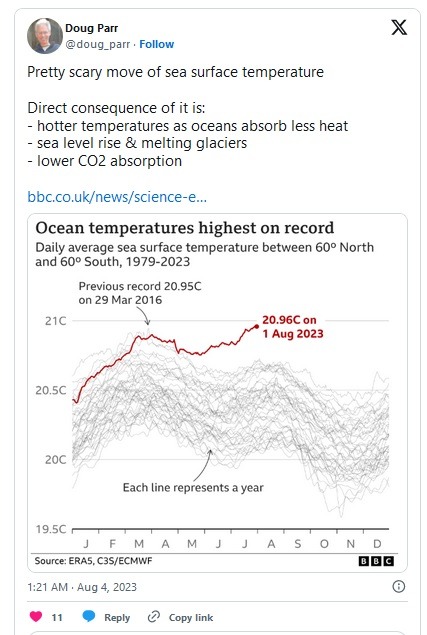
On social media, climate scientists urged news outlets to explicitly connect the rising ocean temperatures to fossil fuel companies and the policymakers who are enabling them to continue fueling the climate emergency—such as British Prime Minister Rishi Sunak, who announced more than 100 new oil and gas licenses in the North Sea this week.
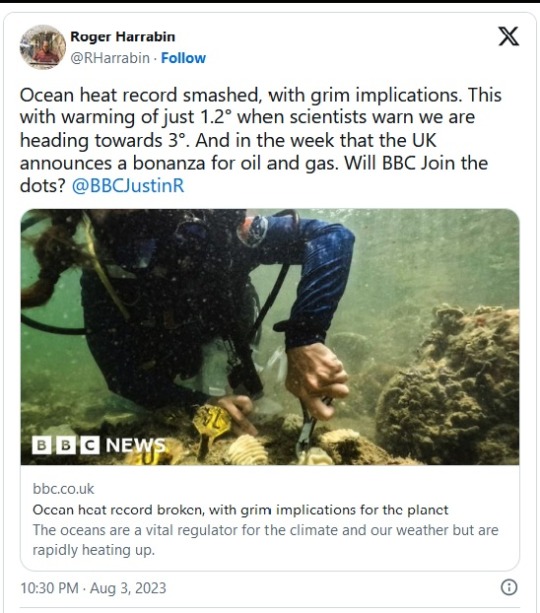
The New York Times this week reported "terrifying Earth breakdown but barely [mentioned] the cause is the fossil fuel industry," said National Aeronautics and Space Administration climate scientist Peter Kalmus.
"The more we burn fossil fuels, the more excess heat will be taken out by the oceans, which means the longer it will take to stabilize them and get them back to where they were," Burgess told the BBC.
Our work is licensed under Creative Commons (CC BY-NC-ND 3.0). Feel free to republish and share widely.
30 notes
·
View notes
Text
We cannot stop all the destruction, but we can light candles for one another.
The mornings are dark, the late afternoons are dusky, and before we finish making dinner, the daylight is gone. As we approach the darkest days of the year, we’re confronted with the darkness of wars, a dysfunctional government, fentanyl deaths, mass shootings and reports of refugees crawling through the Darién Gap or floundering in small boats in the Mediterranean. And we cannot avoid the tragedy of climate change with its droughts, floods, fires and hurricanes. Indeed, the world is pummeled with misfortune.
We can count ourselves lucky if we do not live in a war zone or a place without food or drinking water, but we read the news. We see the disasters on our screens. Ukraine, Israel and Gaza are all inside us. If we are empathic and awake, we share the pain of all the world’s tragedies in our bodies and in our souls. We cannot and should not try to block out those feelings of pain. When we try, we are kept from feeling much of anything, even love and joy. We cannot deny reality, but we can control how much we take in.
I am in the last decades of life and sometimes I feel that my country and our species are also nearing end times. The despair I feel about the world would ruin me if I did not know how to find light. Whatever is happening in the world, whatever is happening in our personal lives, we can find light.
This time of year, we must look for it. I am up for sunrise and outside for sunset. I watch the moon rise and traverse the sky. I light candles early in the evening and sit by the fire to read. And I walk outside under the blue-silver sky of the Nebraska winter. If there is snow, it sparkles, sometimes like a blanket of diamonds, other times reflecting the orange and lavender glow of a winter sunset.
We can watch the birds. Recently it was the two flickers at my suet feeder with the yellow undersides of their wings flashing, the male so redheaded and protective, the female so hungry. Today it may be the juncos, hopping about our driveway, looking for seeds. The birds are always nearby. Their calls are temple bells reminding me to be grateful.
For other kinds of light, we can turn to our friends and family. Nothing feels more like sunlight than walking into a room full of people who are happy to see me. I think of my son and daughter-in-law on my birthday, Zeke making homemade ravioli and Jamie baking an apple cake, their shining eyes radiating love. Or of my friends, sitting outdoors around a campfire in our coats and hats, reciting poetry and singing songs.
We also have the light of young children. My own grandchildren are far away, but I spend time with 9-year-old Kadija. My husband and I are sponsoring her family; they arrived here from Afghanistan, with only the father speaking English, only a few months ago. Already, she can bring me a picture book and read “whale,” “porpoise” and “squid” in a voice that reminds me of sleigh bells. I know someday she will be a surgeon, or perhaps a poet.
In our darkest moments, art creates a shaft of light. There is light in a poetry book by Joy Harjo, a recording by Yo-Yo Ma and in a collection of Monet’s paintings of snow.
The rituals of spiritual life will also illuminate our days. In my case, it is sun salutations, morning prayers, meditation and readings from Thich Nhat Hanh, the Vietnamese Buddhist monk and influential Zen master. Also, it’s the saying of grace and the moments when I slow down and am present. Whatever our rituals, they allow us to hold on through the darkness until the light returns.
Finally, we will always have the light of memory. When I recall my grandmother’s face as she read to me from “Black Beauty” or held my hand in church, I can calm down and feel happy. I feel the light on my skin when I remember my mother at the wheel of her Oldsmobile, her black doctor’s bag beside her. Driving home from a house call, she would tell me stories from her life on a ranch in the Great Depression and during the Dust Bowl.
Deep inside us are the memories of all the people we’ve ever loved. A favorite teacher, a first boyfriend, a best friend from high school or a kind aunt or uncle. And when I think of my people, I’m suffused with light that reminds me that I have had such fine people in my life and that they are still with me now and coming back to help me through hard times.
Every day I remind myself that all over the world most people want peace. They want a safe place for their families, and they want to be good and do good. The world is filled with helpers. It is only the great darkness of this moment that can make it hard to see them.
No matter how dark the days, we can find light in our own hearts, and we can be one another’s light. We can beam light out to everyone we meet. We can let others know we are present for them, that we will try to understand. We cannot stop all the destruction, but we can light candles for one another.
— Dr. Mary Pipher, from “Finding Light in Winter” (NY Times, December 11, 2023). Dr. is a clinical psychologist and writer in Lincoln, Neb., and the author, most recently, of “A Life in Light: Meditations on Impermanence.”
#Mary Pipher#light#war#mental health#art#children#peace#calm#nature#politics#ukraine#hamas#palestine#israel#hate#racism#candles
9 notes
·
View notes
Note
Hello, I just have this question, in your book you didn't explecitly describe Percy but I think it's a common knowledge that gods like pretty things, and one of the most beautiful women to walk earth is said to be psych and Helen, does Percy have the same amount of beauty as them, less or more.
And if you don't mind can you describe Percy's beauty to us.
Love you 💓
Yeah, Percy's beautiful. Even in the books, Hazel mistakes him for a Roman god because of his looks 👀 Obviously Percy in they'll name a city after us has the black hair, the green eyes, and the Mediterranean complexion. I don't really use fancasts, it's all in my head, but I imagine she's beautiful in a raw, wild way, like a storm or a hurricane? If that makes sense? Probably intimidating to mortals who haven't seen anything of the gods lmao
Love you too 💓
14 notes
·
View notes
Text

Britain’s top-scoring naval fighter of World War II was not what you think it was
Hush KitMarch 24, 2020
Fulmar-photo
As World War II loomed into sight, the Admiralty was desperate for anything approximating a modern fighter aircraft. This need was met by a modified light dive-bomber originally intended for a cancelled RAF requirement. The resulting Fulmar shared the engine and armament with the Spitfire and Hurricane, but there though the similarity ended. With a pathetic flat-out speed of 247mph and a feeble service ceiling of 16,000’ it was far inferior to its contemporaries. More worryingly, it was also 30mph slower than the Luftwaffe’s Heinkel He 111 bombers. Fair to say as a fighter it made an adequate cancelled dive-bomber. So how did it became the top Royal Navy fighter of World War II?
Bing Chandler is a former Lynx Observer, current Air Safety Officer and struggling Naval History MA student. He also has some great offers on his internal organs now Seafire PP972 is up for sale.
During World War II, no aircraft carrier force operated a greater number of types than the Royal Navy. Although partly due to the length of time Britain was involved in the conflict, the Admiralty’s haphazard approach to aviation doctrine and procurement bears a lot of the blame (although nothing can excuse the diabolical Blackburn Firebrand). It is still however something of an anomaly that the Fleet Air Arm’s highest scoring fighter of the war was the relatively slow and staid Fairey Fulmar — with 112 kills (more than double the total achieved by the far more potent Corsair). Despite this, the Fulmar has never really caught the popular imagination. Post-war historians have damned with faint praise by acknowledging that while it was at least capable of taking on torpedo-bombers, the Fulmar’s manoeuvrability was far inferior to Axis dive-bombers. To give some idea of the limited esteem in which it was held at the time, it is perhaps worth reading a verse from 809 Naval Air Squadron’s Fulmar Song (to the tune of ‘Any old iron‘:
‘Any old iron, any old iron,
Any, any, any old iron;
Talk about a treat
Chasing round the Fleet
Any ole Eyetie or Hun you meet!
Weighs six ton,
No rear gun
Damn all to rely on!
You know what you can do
With your Fulmar Two;
Old iron, old iron!’
Fighter Direction is everything
To understand this apparent contradiction, of how such a sluggish machine was the Navy’s best fighter, it is necessary to look at a technology that at the time made the aeroplane look positively middle-aged: radar. The Royal Navy had been at the forefront of developing naval radar, but even so, by 1939 its capabilities were extremely limited. Rather than the top down ‘God’s eye view’ of a modern display, operators would look at a single wiggling line with increases in amplitude indicating a contact. Despite entering the war without a full understanding of what radar could achieve – and after some teething troubles – the Navy soon found ways to make up for the deficiencies of its aircraft. This would allow Fairey’s converted dive-bomber to hold its own in aerial combat through the opening years of the war in a way that belied its poor headline performance. The actions in the Mediterranean to escort convoys to Malta showed time and again the value of Fighter Direction where controllers onboard ship would direct the aircraft to intercept incoming attacks. Often these aircraft would be Fulmars, which were in the front line throughout that period, before being relegated to the role of night fighter. Somewhat ironically, the addition of radar antenna for this role would finally render its performance unequivocally unacceptable. Fighter Direction would give the Fulmar the edge it needed to overcome its shortcomings while engaged in some of the heaviest aerial combat the Royal Navy would face during the Second World War.
The Royal Navy’s inter-war doctrine for the Fleet Air Arm, as described in an Admiralty Memorandum from December 1936, concentrated on the search for enemy shipping, air attack of that shipping, and subsequent observation of the fall of shot for the fleet’s big guns . It was considered that air superiority would be achieved by the immobilisation of the enemy’s carriers no apparent thought being given to air to air combat. The reverse was also true in that it was not considered possible for naval fighters to defend the fleet from air attack, especially when faced with land-based air forces able to deploy heavy bombers . To counter the air threat the Third Sea Lord, Rear Admiral Sir Reginald Henderson, decided that the next class of carrier would feature extensive armour plating turning the hangar into a protective enclosure for the air group able to resist a direct hit from 500lb bombs and 4.7” gunfire . The Dido class cruisers optimised for air defence would then provide the defence against air attack , in addition to the Illustrious classes own extensive outfit of sixteen 4.5” guns. That the doctrine was so un-ambitious can in part be laid at the confused status of naval aviation between the wars, it was, until 1938, the Fleet Air Arm of the Royal Air Force not of the Royal Navy . In fairness to the Admiralty at the same time despite the Imperial Japanese Navy controlling its air arm its doctrine was also confused and poorly regarded by its air officers perhaps indicating the difficulties inherent in developing high level policy for a new form of warfare. The Royal Navy’s use of fighter aircraft would therefore have to develop as lessons were learnt. A memorandum from January 1940 while acknowledging the need to intercept enemy strikes and scouting aircraft as well as escorting the fleets own strikes still showed a degree of indecision over whether they would still require a second crewmember as the Fulmar did, a confusion that had not been resolved three months later . Ultimately this indecision would lead to both single and two seat fighters being produced for the Royal Navy. Where the Royal Navy had a serious disadvantage was in the actual procurement of aircraft where the Admiralty drew up the specifications for them while the Air Ministry then had responsibility for their design and production.41_803_sdn_fulmar_take_off.jpg

Due to the lack of air officers at the right level the Admiralty had scant expertise in the specification of aircraft which led to it entering the war with several poorly performing aircraft either in service or on the way. These included the Blackburn Roc, a turret equipped fighter which could barely stay airborne at full power; the Fairey Barracuda which provided panoramic views for the Observer but had a tendency not to pull out of dives , and the Blackburn Firebrand which took longer to develop than the war lasted. Consequently, at the outbreak of war the navy found itself back in control of its air arm, but with limited understanding of the capabilities air power brought, no real thought given to air defence of the fleet by aircraft, and a procurement plan that could best be described as flawed. It was from this background that the requirement for the Fulmar would emerge, to some extent explaining the compromises that were accepted.

Screenshot 2020-03-23 at 22.17.42.png Though confusion over the use of naval air power was hampering the acquisition of suitable aircraft, by the late 1930s there was at least an acknowledgment that a new fleet fighter would be required. It was a pressing need, as the Skua it would replace was predicted to be obsolete by as soon as 1940. Consequently, it was a requirement that the chosen aircraft be in production by September 1939 which effectively limited the options to something already in production. The Admiralty’s preference was for a two-seat aircraft, due to the difficulties of navigating over the sea and communicating at long range from the carrier. Outright speed was considered less important as there was an assumption that the carrier-borne fighter would only encounter aircraft of other navies which would be similarly restricted. It is perhaps ironic that at the same time the most likely naval opponent was being designed by Mitsubishi in Japan, the Mitsubishi A6M Zero, a type which faced neither of these restrictions. The design selected for the Royal Navy was a modification of a design submitted to the RAF as a light dive-bomber. This RAF original requirement had been dropped, but prototypes had already been constructed – which allowed a rapid assessment to be made of their suitability. The Fairey P.4/34 bomber (with minor changes) thus became the Fulmar naval fighter (with a secondary reconnaissance role). The first production aircraft was completed in December 1939, effectively running around three months behind the Admiralty’s timeline.. or ahead of schedule compared to most defence projects. The Fulmar shared an engine, the Merlin, and armament, eight 0.303” guns, with the Spitfire and Hurricane. There though the similarity ended. The early Spitfire’s top speed was 364mph at an altitude of 18,500’ , the Fulmar by comparison had a maximum speed of only 247mph at 9,000’ and a service ceiling of 16,000’ (half that of the Spitfire).
16 notes
·
View notes
Text
Here's my attempt to make sense of the timeline of Pirates of the Caribbean: Dead Man's Chest. Yeah, I know I'm looking too close at things that weren't meant to be looked at closely.
P1 ENDING: Jack escapes from the gallows with the help of Will & Elizabeth, and Norrington gives him one day’s head start before he begins chasing him. This happens on 21 September, 1723 according to text on the arrest warrant prop from P2.
ISLA DE MUERTA: Jack and his crew return to Isla de Muerta only to find that the island has been swallowed into the sea, taking the treasure with it; the cursed monkey is the only thing to survive. I can only assume that this immediately follows the gallows escape.
HURRICANE: Norrington becomes obsessed with capturing Jack and chases him across the seven seas, but loses his ship and crew in a hurricane off Tripoli. He resigned his commission “some months” before the opening of P2.
TURKISH PRISON: In his P2 intro, Jack is still far from the Caribbean, held captive in a Turkish Prison along the cliffs of the Mediterranean Sea. He eventually escapes and reunites with his crew aboard the Black Pearl. This was originally scripted as the opening for P2, and makes more sense to look at it as taking place first.
BOOTSTRAP: Bootstrap Bill visits Jack on the Black Pearl and curses him with the black spot; Jack freaks out and heads for land. This is still fairly near the Turkish Prison, as evidenced by the Turkish sailors who find Jack’s hat and are promptly eaten by the Kraken.
P2 OPENING: Lord Beckett arrives in Port Royal to arrest Will and Elizabeth (and Norrington) for helping Jack escape the gallows. This is the opening of P2 in the final cut of the film.
PELEGOSTO: Will goes to find Jack and the search eventually leads him to find the Black Pearl beached on racism cannibal island. How the hell did "heading for land" take Jack from the Mediterranean to the Caribbean??? So much for trying to avoid the wrath of the Kraken. Anyway, the rest of the film happens in a more or less straightforward manner.
How much time passes between P1 and P2? Well, there are two possible canon answers to that question:
SWANN’S LETTER: The letter that Governor Swann writes for the King is dated 24 March, 1724 according to photos of the prop. If you take these dates written on the props as canon, then almost five months have passed between the ending of P1 and Elizabeth’s escape.
DELETED SCENE: In a deleted exchange between Will and Bootstrap, Will mentions that it’s been “nearly a year” since he lifted the curse. If you take this as canon, then a bit more time has passed between films than is shown by the dates on the prop documents.
How much time passes between P2 and P3? The closest we have to a canon answer is, uh. quite vague.
NOVELIZATION: The At World's End novelization only tells us "The governor had been searching for Elizabeth for months, ever since he helped her escape her cell in Port Royal and saw her flee into the dark night."
And finally, there's this one little thing that raises so many questions:
TORTUGA: Will looks for Jack in Tortuga, and hears from Scarlett & Giselle that they haven't seen him in a month. This sets Jack's last sighting in the Caribbean at that point after the hurricane off Tripoli and Norrington's resignation "several months ago", but he's still in the Mediterranean when he flees from the Kraken. Did he go back to the Mediterranean after the hurricane in order to obtain the drawing of the key at the Turkish Prison? Did he stop in Tortuga on the way to Pelegosto for a quick shag? Man, I have no fucking clue.
56 notes
·
View notes
Text
Hard to believe it was exactly a year ago that we visited the Mediterranean. Back to the more relaxed pace of Kauai this year. If my defibrillator continues to work, I hope to create a weekly edition of my blog this year.
These islands have always intrigued me. Partly because of their seemingly random discovery 1500 years ago by some Polynesians in a canoe, and partly because of their explosive but transient existence. More on those topics on another day.
We have been to the Big Island and Maui twice each before, but our last 5 trips have been to Kauai. In my opinion it is the least spoiled (least developed) with friendly locals, awesome hiking and scenery (NaPali Coast) and today’s topic….. wildlife.
As you can see below, the trip was pleasant and without any nasty animals in our row. Worth the extra $$.

Our villa is one of 30 units…..deep within a volcanic crater about 75 yards from the ocean. This little guy and several hundred of his friends provide music for our daily happy hour.

These NeNe below seem to be part duck and part goose. Interesting markings and much more pleasant than their Cdn cousins. Found only in Hawaii.
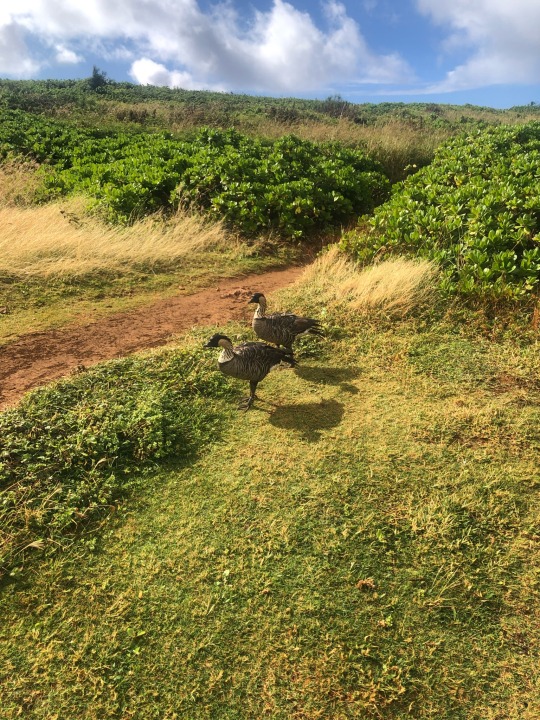
This island is also filled with wild Roosters and Hens from the deepest jungle to every roadside. Reportedly a hurricane in the 80s or 90s released a few thousand into the wild and the rest is history. All the islands have wild chickens but more here than elsewhere.
On Poipu Beach……. Giant Green Turtles make regular appearances for naps. About 5 feet long and 400-500 pounds, the pictures do not do justice to the enormity of these beasts. Strictly protected and adored by the local community.

The beaches here are many and mostly deserted. Here Princess returns to the blog to check out the Monk Seals

These 500 pounds seals are only found in the Hawaiian chain of islands.

Most reside near Kauai and further north along the numerous Atolls and very small islands(such as Midway) stretching north from here. The chain of Atolls beyond Kauai lasts for about 1000 miles towards Japan.
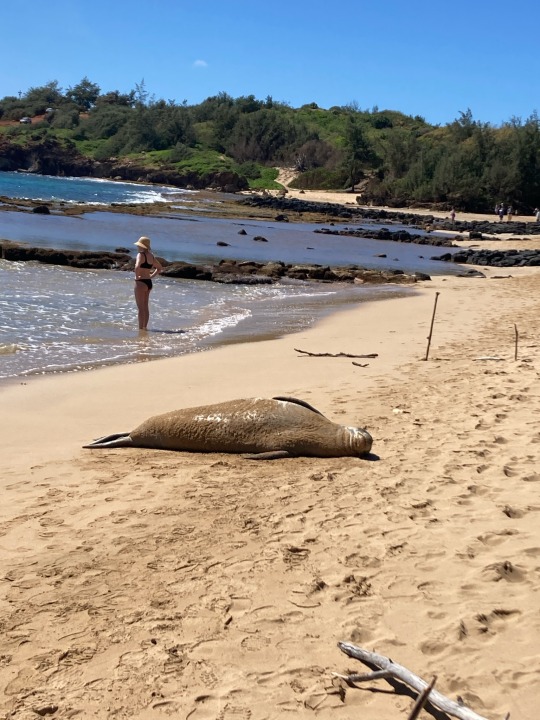
Not concerned at all with people. Just belly up and basking. These 2 guys were hanging out yesterday at different points along our swimming beach stroll. Walkers like us plant stakes around them for privacy so the rare numb nuts gets the point not to harass.
And finally Princess had her birthday dinner last week.
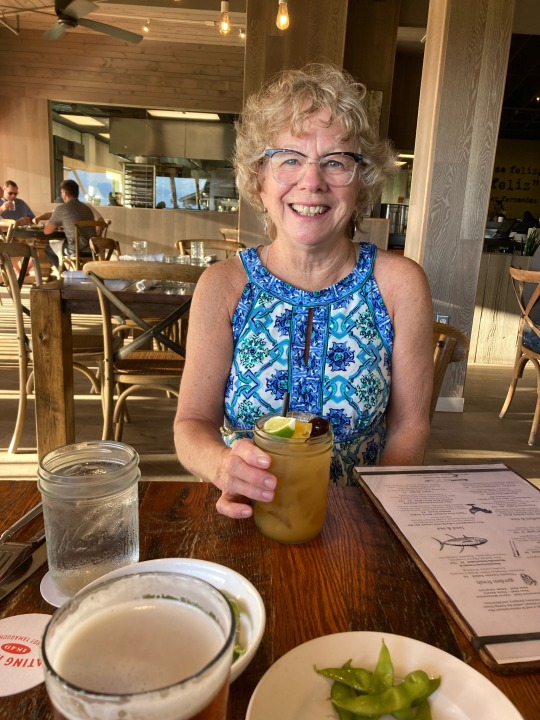
No need for hair curlers on the island and we love the open air restaurants.
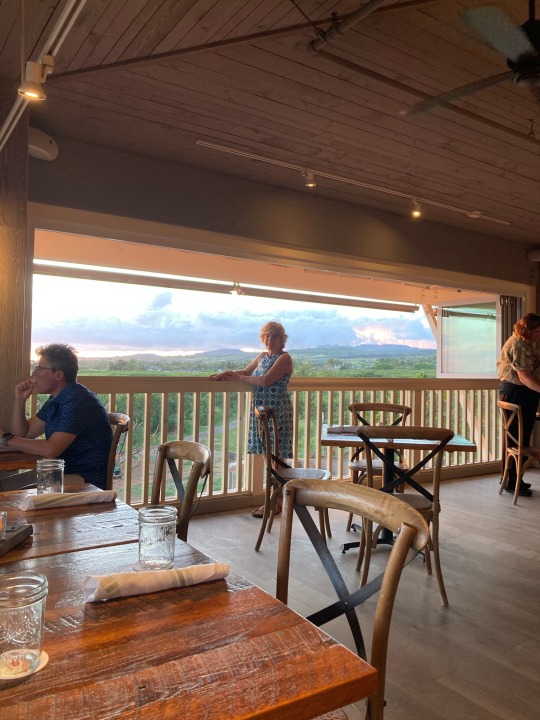
Next week…….. the creation and erosion of all these beautiful places.
P.S. We are heading to Paris for a few days in August during the Olympics then cruising the Seine to see the historic beaches in Normandy. Stay tuned for a summer of WW2 sites and stories
2 notes
·
View notes
Text

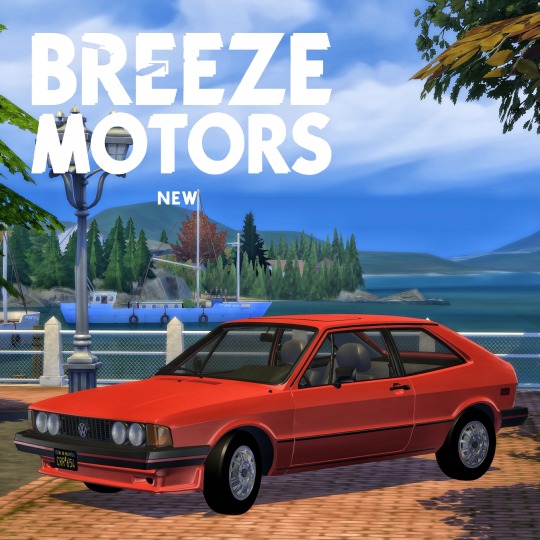
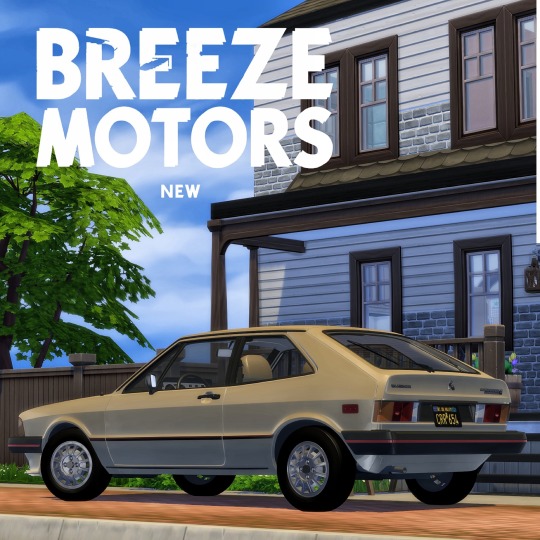
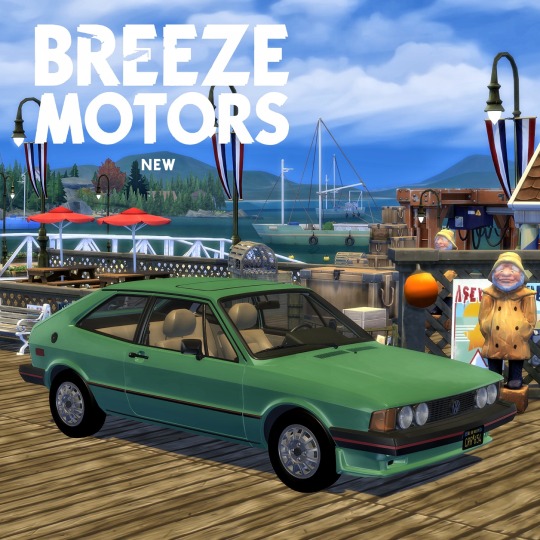

“Like the wind”
1981 Volkswagen Scirocco 🇩🇪
Like other Volkswagen models of its era—namely the Jetta—the Scirocco derives its name from the wind; in this case, the Mediterranean Sirocco wind, which originates in the Sahara and can reach hurricane speeds in southern Europe. While the stock 1.7-liter 74-horsepower engine that powers the ’81 Scirocco S might not register on the Beaufort scale (the car tops out at a modest 111 mph), the Scirocco S proved to be a worthy replacement for its sports coupe predecessor the Karmann Ghia. The distinctive red VW badge and belt-line moulding set the Scirocco S apart from its standard model counterpart, along with a five-speed transmission, a front spoiler, and light alloy wheels. Visually and performance wise, it’s easy to see why VW customers at the time considered the Scirocco S a breath of fresh air.
Available exclusively for “No Limits” and “All Inclusive” tiers.
Model with HQ interior, open/close doors, tailgate and functional light.
Go and join my Patreon!
#the sims 4#sims 4#sims4#sims4car#the sims 4 cc#the sims 4 custom content#thesims4cars#the sims 4 cars#sims4vehicles#the sims#the sims 4 cc finds#sims 4 cc finds#the sims 5#sims 4 cars#sims 5#sims 4 cc#the sims custom content#sims 4 alpha cc#sims
17 notes
·
View notes
Note
A-Z Fandom Asks: N, P, R? (that wasn't planned, just. happy accident?) please and thank you!
A -> Z FANDOM ASKS.
N - Name three things you wish you saw more of in your main fandom (or a fandom of choice).
my number one is r/v obviously <3 i do actually feel kind of spoiled with the shippy stuff ive found in some old blogs though, i tend to adopt the rarest of rarepairs so i'm not complaining. but more is always better! and i'm steadily converting people to the cause 🏴☠️
generally speaking i think the pre barnabas episodes could always use more love. it's quite different tonally to later on and I can understand why folks might skip it for those reasons, but I fervently protest the idea that they're boring ! I'm biased of course because my faves are the 1966'ers, but there's so much delicious character work going on, and I think ... you need the rotted b&w gothic foundation for the technicolor house of horrors built on top of it, if that makes sense. i also think barnabas is kinda :/ it should be pre and post laura collins if we're all being honest with ourselves here.
hmmm. possibly a symptom of like, only being here / a tiny bit on twitter and not on like, actual forums, but i would love to see more long ass ds metas. love to read the insanely smart things b.lack s.ails people (and p.otc!) post on the reg. need that about haunted maine ppl
P - Invent a random AU for any fandom (we always need more ideas).
okay well you can guess where i'm going to go with this west indies piracy au go
The Collinses are descended from merchant wealth in England and currently control a small port city in the Bahamas. the family's connections to the Marquess of Winchester manages to land Roger an appointment as governor, although everyone knows the title is only a formality: his sister runs everything, including Roger. once prosperous, a combination of over-fishing, hurricanes, and an earthquake twenty years past has left the town desolate, and the sand beneath their feet liquefied. rather than abandon what she has built, Elizabeth is determined to hold on, but without any support from England for what they feel has no hope to turn profitable, the family turns to investing in forced trade.
enter Burke Devlin, a privateer employed under a letter of marque signed and sealed by Roger Collins. Devlin is the best, most profitable, and most infamous of their captains, often dining with them at their table and a close friend of the governor. For a while they enjoy mutual prosperity with Spain's wealth, and pirate labor. But the world is growing more respectable around them, and what was once the fringes of civility is gradually becoming its center. The way to survive is no longer with the pirates. When Burke is captured and tried for piracy, his benefactors turn their back on him: he is sacrificed, essentially, as a figurehead for the port and governor's respectability (vaguely à la Kidd). Even his wife sends written testimony against him, and remarries before her husband officially swings, to his former friend and sponsor, Roger.
Burke manages to escape before his hanging, and turns to piracy in the Mediterranean – after ten years, in 1698, he comes back to raid the Collins shipping fleet, with the eventual goal not of razing Collinsport to the ground, but of installing himself as governor there. One of the ships he captures carries a special passenger – the new governess, sent for from England – and he personally delivers her to their doorstep, but not before she can witness how different Captain Devlin is from the terrifying stories about him and his crew.
the governess also brings news from England: William III has passed a new law against the pirates in the West Indies. any person to aid and assist, or maintain, procure, command, counsel, or advise the pirates, are condemned to the same loss of property and life as the pirates themselves.
meet also:
maggie evans, the no-nonsense tavern wench, and her sweetheart, the honest merchant sailor joe haskell that hates pirates and everything they stand for
carolyn stoddard, who has a copy of Exquemelin in both French and English and has memorized every word, and is violently jealous of vicki for dining with a scary pirate captain. she'd like nothing better than to be kidnapped out of the governor's mansion. her cousin david loves the stables and knows everything about horses ... including how best to spook them.
sam evans, former court painter, now art forger
julia hoffman, naturalist (and other sciences as required)
bill malloy, who oversees the merchant fleet and the warehouses, and carries carolyn home from the docks or the tavern by the scruff of her neck, if he has to.
laura collins, sent away to bedlam for hysteria, managed to come back, and is now setting boats on fire as a hobby
the blairs, hailing from massachusetts: james, a well-respected lawyer eventually revealed to be working with devlin, and his cousins, nicholas and cassandra, political and religious exiles who spent some time in maritinique, where they both adopted quimbois practices.
jason macguire, irish smuggler, and willie loomis, former indentured servant working out his sentence in america. they have a run in with cousin barnabas, who's been making his questionable fortune in the east indies rather than the west, and who definitely does not do any cannibalism.
R - Which friendship/platonic relationship is your favorite in fandom?
ROGER AND JULIA. in other places, eleanor and flint >>>> also elizabeth and barbossa. i feel like this is forming a pattern of some kind hang on
#i may be wildly predictable at this point#tortoisesshells#➤ answered. ┊ collinsport 4099.#➤ meme responses. ┊ boo !#➤ ooc. ┊ she’s nauseous,she’s hysterical,and she’s exhausted.
6 notes
·
View notes
Text
neofolk playlist to experience the first hurricane after a prolonged mediterranean summer drought with
30 notes
·
View notes
Text
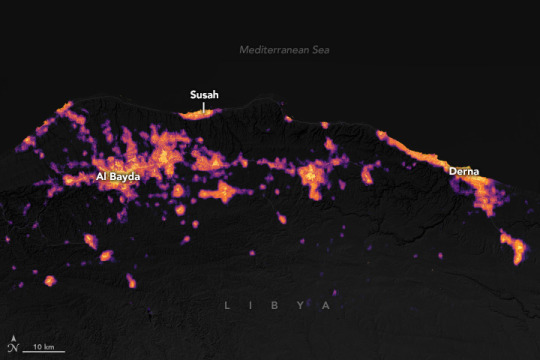

Tracking Nightlights in Libya
On September 10, 2023, a potent storm brought heavy rain to northeastern Libya, causing significant loss of life and devastation to cities along the coast. Data from satellites show that after the storm, many communities in the region had lost electric power.
The storm—a Mediterranean hurricane-like system known as a medicane—brought 414 millimeters (16 inches) of rain to the city of Al Bayda. Nearby, the port city of Derna received more than 100 millimeters (4 inches)—far exceeding the city’s average monthly rainfall for September of less than 1.5 millimeters (0.1 inches).
Flash floods swept away roads and entire neighborhoods, displacing around 40,000 people across the country. Preliminary estimates by the United Nations Satellite Center (UNOSAT) indicate that about 10,000 buildings were damaged by floodwater, although assessment of the damage was still ongoing as of September 22. Infrastructure damage led to power outages, which can be seen in satellite images acquired at night.
The maps above show the amount of light emitted from affected communities in northeastern Libya before and after the storm and the peak of the torrential flooding. The top map shows the area on September 8, 2023; the lower map shows the same area on September 13, three days after the storm made landfall.
“There was a substantial loss of power evident in the vicinity of Derna and Al Bayda in the September 13 image when compared to the baseline image,” said Ranjay Shrestha of NASA’s Black Marble science team. The maps come from the Black Marble HD product, provided by Shrestha and Zhuosen Wang, a principal investigator on the science team, and are based on data from the Visible Infrared Imaging Radiometer Suite (VIIRS) sensor on the NASA-NOAA Suomi NPP satellite. The basemap was built from data collected by Landsat 8 and Landsat 9 satellites.
Derna was devastated by the storm. Flooding in the city led to the collapse of two dams along a usually dry riverbed, or wadi. The dam failures unleashed 3- to 7-meter-high floodwater that tore through the city, sweeping roads and buildings out to sea.
The city became significantly darker after the storm hit. In a recent report, UNOSAT documented changes in Derna’s brightness. UNOSAT uses Black Marble nighttime light products to support ground teams for disaster response.
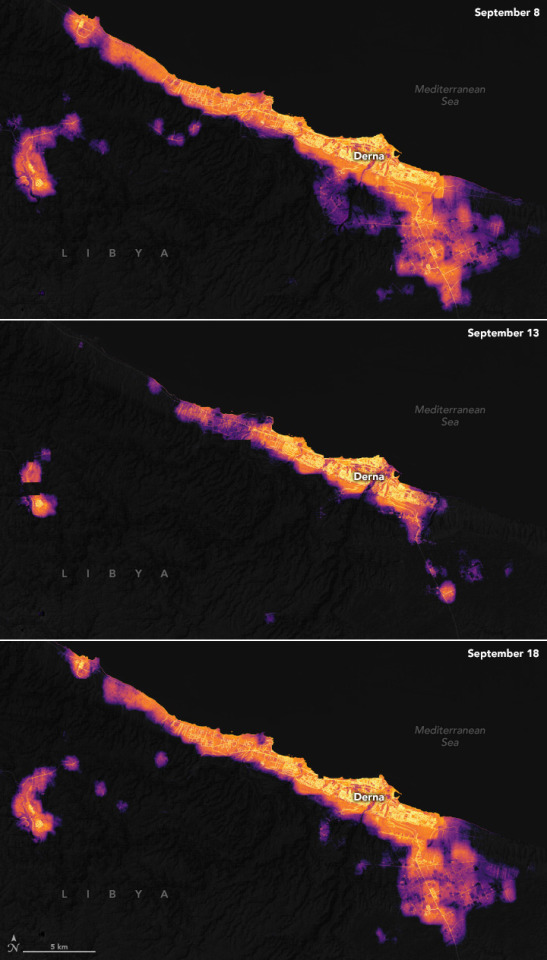
Some communities near Derna went four days without electricity, according to NPR reporting. But by September 18, 2023, the brightness of outdoor lighting in Derna was approaching pre-storm levels. “There’s a lot more recovery compared to the September 13 image,” said Shrestha. “However, there are still pockets of areas, particularly in the outskirts of the Al Bayda area, where recovery seems ongoing.”
Raw, unprocessed images of night lights can be misleading because moonlight, clouds, air pollution, snow cover, seasonal vegetation, and even the position of the satellite, can change how light is reflected. The Black Marble science team processes the data to account for these factors.
NASA Earth Observatory images by Wanmei Liang, using Black Marble data courtesy of Ranjay Shrestha and Zhuosen Wang/NASA Goddard Space Flight Center, Landsat data from the U.S. Geological Survey, and data from OpenStreetMap. Story by Emily Cassidy.
2 notes
·
View notes
Text
I just saw a blog about greece being full climate negationist about the fucking mediterranean hurricane they have just experienced.
5 notes
·
View notes
Text

First Spitfires to Malta, March 1942
Header image: Mk Vb Spitfires on the deck of the RN aircraft carrier HMS Eagle before flying off to Malta during Operation PICKET on 21st March 1942. The Spitfires have the large Vokes air filters under the nose to counter the dusty conditions on Malta, and are fitted with 90-gallon ‘slipper’ belly tanks.
80 years ago this month, in March 1942, the situation on the besieged Mediterranean island of Malta had become dire. The German and Italian Axis air forces were attacking the island several times every day and it was becoming the most bombed place on earth. The Malta inhabitants and defenders were facing acute shortages of everything, including pilots and aircraft. The Hawker Hurricanes defending the island were outclassed by the Luftwaffe Bf 109Fs; the incessant attacks on their airfields, and losses in combat, were diminishing their numbers to critical levels. Some sources suggest that the number of serviceable Hurricanes had fallen to as few as 12. In late February 1942, Squadron Leader Stan Turner DFC and Bar, a Canadian, a veteran of the Battle of Britain and now the C.O. of 249 Squadron on Malta, told the A.O.C., Air Vice Marshal Hugh Lloyd, “Either, Sir, we get Spitfires here within days, not weeks, or we’re done. That’s it.”

HMS Eagle in the Mediterranean with Spitfires on the flight deck during Operation SPOTTER, which delivered the first 15 Spitfires to Malta on 7th March 1942.
The first Spitfires to arrive on Malta, and the first to be deployed outside of Britain, were 15 Mk Vb Spitfires, which were flown off the RN aircraft carrier, HMS Eagle, on 7th March, on Operation SPOTTER. The Spitfires were fitted with 90-gallon ‘slipper’ belly tanks to give them the range for the 650-mile flight to Malta. To counter the prevalent dusty conditions that they would encounter on Malta, the Spitfires had the large Vokes filter under the nose, which created more drag and lowered the aircraft performance. In order to take-off from HMS Eagle’s short 660-feet long flight deck, the Spitfire needed take-off flaps. However, the Spitfire’s pneumatically-operated flaps have only one setting of 85 degrees (drag flap for landing). The solution was to wedge the flaps at a 25-degree setting with a wooden wedge. Once safely airborne, the flaps could be lowered to drop the wedges and then raised again. The 15 Spitfires all reached Malta safely and flew their first combat sorties against a raid by Junkers Ju-88s, escorted by Bf 109 fighters, three days later on 10th March. The 19-strong defensive force of Spitfires and Hurricanes scrambled from Ta Qali and Hal Far was the largest the island had been able to muster for some weeks. Flight Lieutenant Philip ‘Nip’ Heppell of 249 Squadron, claimed the Malta Spitfires’ first kill when he shot down a Bf 109, whilst other Spitfire pilots claimed a ‘probable’ and three enemy aircraft damaged during the day.
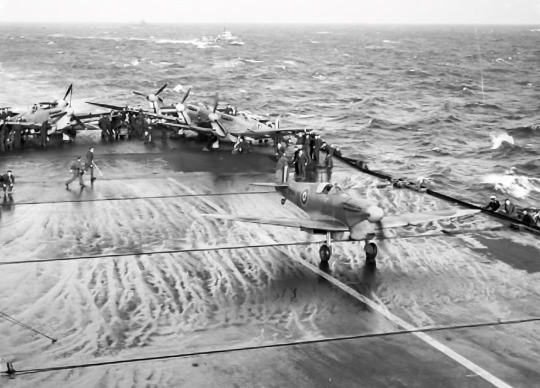
Spitfire Mk Vb BP844, the first of a further nine Spitfires to reinforce the RAF on Malta, taking off from the flight deck of HMS Eagle on 21st March 1942, during Operation PICKET, with Sqn Ldr E J "Jumbo" Gracie at the controls. Behind him, the other aircraft await their turn. These Spitfires flew to Ta Qali to re-equip 126 Sqn, which Gracie was to command. BP844 was shot down over Malta, with the loss of its pilot, on 2nd April 1942.
A further nine Spitfires flew off HMS Eagle on 21st March on Operation PICKET, all reaching Malta safely. The Spitfires arrived in the critical phase of the Axis bombing offensive against Malta, which reached its apex between 20th March and 28th April 1942. HMS Eagle launched nine more Spitfires on 29th March, after which damage to her steering gear meant she had to be put into dry dock. Subsequent Spitfire deliveries to Malta were made from the flight deck of the USN carrier USS Wasp. In the months that followed, some 275 Spitfires were delivered to the beleaguered island.

Three Spitfire Mk VCs (Trop), with BR130 'T-D' nearest, of 249 Sqn at Ta Qali, Malta, in 1942.
During the month of March 1942, the Luftwaffe flew a total of 4,927 sorties against Malta. The RAF lost 12 fighters in combat, with nine pilots killed, and a further 46 were destroyed on the ground. RAF causalities during the bombing raids were 28 killed and 34 wounded.
LEST WE FORGET
@OzanneMichael via X
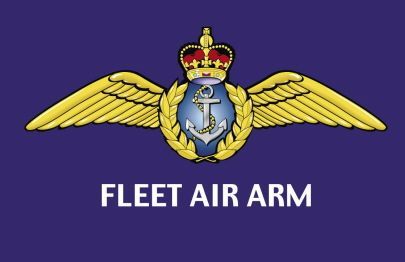
8 notes
·
View notes